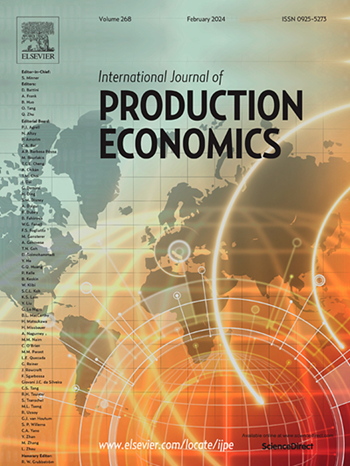Enhancing a triple capital-constrained supply chain performance: Alliance financing, profit distribution, and information structure
IF 9.8
1区 工程技术
Q1 ENGINEERING, INDUSTRIAL
引用次数: 0
Abstract
In a contemporary supply chain, the situations in which all upstream, midstream, and downstream participants face capital constraints commonly appear and call for participants to coordinate and form an alliance to adopt supply chain finance (SCF) to optimize their operations and improve performance. Applying a game-theoretic framework, we examine four SCF alliances associated with a capital-constrained supplier, manufacturer, and retailer, respectively, within a triple capital-constrained supply chain (TCSC), including partial and full alliance financing schemes, and compare the participants’ profit, propagation effect of insolvency risk, and supply chain performance with individual financing. Our findings suggest that full alliance financing, although generates more propagation effect of insolvency risk, brings additional profit to all participants in a TCSC than partial or individual financing through reduced double or triple marginalization, as reflected by lower wholesale price, higher order quantity, and lower financing amount. The initial capital level is important in affecting participants’ operational and financial decisions and profits. Regarding profit distribution plans, we find the Shapley value distribution approach is preferred by all parties more than expected profit or even distribution when the collaborative benefits from alliance financing are high. Asymmetric information affects participants’ operational and financial decisions, profits, and the propagation effect of insolvency risk. Our findings guide participants in forming an alliance to apply for financing and coordinate to use the funds to optimize operations, achieve higher profit, implement the Shapley value profit distribution approach, enhance information transparency, and strengthen the intensity of insolvency risk monitoring and control.
求助全文
约1分钟内获得全文
求助全文
来源期刊
CiteScore
21.40
自引率
7.50%
发文量
266
审稿时长
52 days
期刊介绍:
The International Journal of Production Economics focuses on the interface between engineering and management. It covers all aspects of manufacturing and process industries, as well as production in general. The journal is interdisciplinary, considering activities throughout the product life cycle and material flow cycle. It aims to disseminate knowledge for improving industrial practice and strengthening the theoretical base for decision making. The journal serves as a forum for exchanging ideas and presenting new developments in theory and application, combining academic standards with practical value for industrial applications.

 求助内容:
求助内容: 应助结果提醒方式:
应助结果提醒方式:


